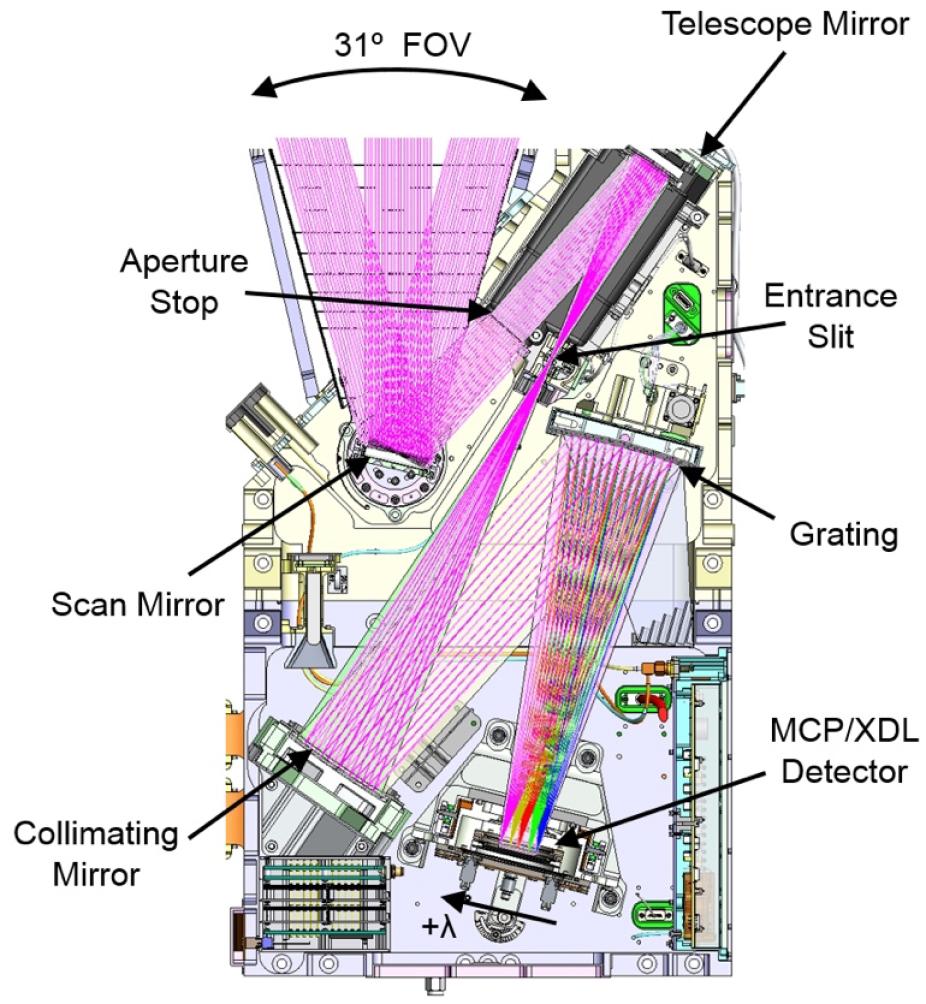ublication Name: Journal of Geophysical Research Space Physics; First HAO Author's Name: Stan Solomon; Authors: McClintock, W. E., Richard Eastes, Alan Hoskins, Oswald Siegmund, Jason McPhate, Andrey Krywonos, Stanley Solomon, and Alan Burns
The Global-scale Observations of the Limb and Disk (GOLD) is a NASA mission of opportunity designed to study how the Earth’s ionosphere-thermosphere system responds to geomagnetic storms, solar radiation and upward propagating tides on time scales as short as 30 minutes.

Sectional view of a GOLD spectroscopic imaging channel.
GOLD employs two identical ultraviolet spectrographs that make observations of the Earth’s thermosphere and ionosphere from a commercial communications satellite owned and operated by SES and located in geostationary orbit at 47.5° west longitude (near the mouth of the Amazon River). They make images of atomic oxygen 135.6 nm and N2 LBH radiances of the entire disk that is observable from geostationary orbit and on the near-equatorial limb. They also observe occultations of stars to measure molecular oxygen column densities on the limb. Here we describe the GOLD instrument including its optical system and detector. Its performance was characterized in the lab before launch. We compare measurements of laboratory sources made then to observations of the thermosphere after launch and find good agreement.
Link to paper: Global-scale Measurements of the Limb and Disk (GOLD) Mission Implementation: 1. Instrument Design and Early Flight Performance